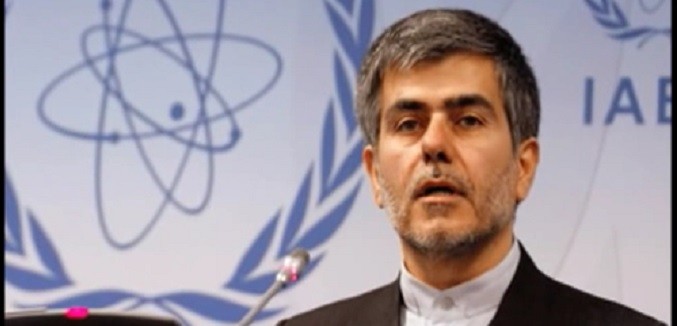The New York Times reported Tuesday that Iranian negotiators have continued to deny the West access to Mohsen Fakhrizadeh, even as the P5+1 global powers are trying to hammer out an agreement that would force Iran to put its atomic program beyond use for weaponization:
Mohsen Fakhrizadeh is considered by Western intelligence officials to be the closest thing Iran has to J. Robert Oppenheimer, who guided the Manhattan Project to develop the world’s first nuclear weapon. For more than a decade, he has been identified as the relentless force behind on-again, off-again programs to design a nuclear warhead that could fit atop one of Iran’s long-range missiles — a complex set of technologies that are a critical factor in how long it would take for Iran to build a weapon. As the keeper of Iran’s greatest nuclear secrets, he looms over the talks that he never attends.
The stakes regarding Western access to Fakhrizadeh are straightforward: Any comprehensive nuclear agreement would have to include robust verification mechanisms to ensure that Iran had ceased among other things clandestine nuclear work, a task that requires an understanding for the scope of such work. Tehran is obligated by among other things United Nations Security resolutions to account for any such “possible military dimensions” (PMDs) of its nuclear program, and Obama administration officials had explicitly and repeatedly assured lawmakers and journalists that Tehran would be forced to meet those obligations.
The Times however reported that U.S. negotiators appear to be moving away from those assurances and accepting what skeptics have for months suggested was a fairly transparent Iranian ploy, under which negotiations would proceed on other issues until Tehran would functionally dare P5+1 diplomats to scuttle a deal over what could publicly be written off as past work.
The Times was nonetheless blunt in consequences of such a scenario:
That means that any agreement among the United States and its five negotiating partners — Britain, France, Germany, China and Russia — within the next few weeks will be shrouded by uncertainty about how long it would take for Iran, if it produced or bought bomb-grade fuel, to make a nuclear weapon. American negotiators seem to be steering away from forcing a full historical accounting from the Iranians before any accord is signed, arguing that excavating the past is less important than assuring Iran does not have the raw material to make a weapon.
Understanding Fakhrizadeh’s role is considered critical to gaining insight into the full range of Iranian activities that would need to be verified under any agreement. Analysis recently published by Washington Institute adjunct fellow Nima Gerami puts the senior IRGC officer at the beginning of Iran’s modern weaponization efforts, when in 2003 “alleged [Iranian] weaponization activities were consolidated under the ‘AMAD Plan’ led by [Fakhrizadeh].”
The UN’s nuclear watchdog (IAEA) assesses that the AMAD Plan was suspended in the aftermath of the U.S.-led military campaign against Iraq, but by 2012 the Wall Street Journal was able to report that Fakhrizadeh was “back at work.”
The outlet explained that Fakhrizadeh had a year earlier launched a new institution – the Organization of Defensive Innovation and Research (SPND), made up of six directorates including research labs for metallurgy, chemistry and explosives testing – and had renewed efforts seemingly aimed at the production of nuclear weapons.
In February 2013 the Sunday Times reported that Fakhrizadeh had been present for North Korea’s third atomic detonation, prompting Israeli officials and analysts to worry that the Iranians were “using North Korea as a backdoor plan for their own nuclear program… [and had] bypassed inspections via North Korea.”
[Photo: Ahmad V / YouTube]




